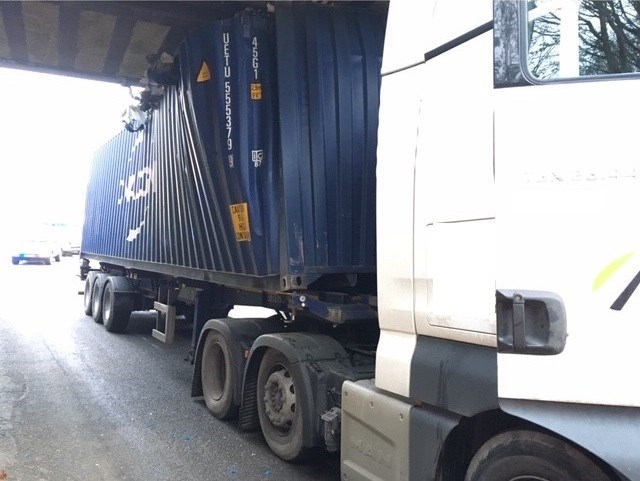Thursday 16 Jul 2020
Reducing the impact at Anglia’s top ten most bashed and at-risk railway bridges
- Region & Route:
- Eastern: Anglia
The top ten most bashed and at-risk railway bridges across Anglia and East London will be fitted with a new CCTV system to reduce delays and cancellations to rail services as part of a £190k investment programme.
The new CCTV cameras will capture images of the bridge deck, allowing faster examination in the event of a bridge strike. Structural engineers can examine the footage and damage as it was caused, which is particularly useful if the culprit has driven away. The footage allows for quicker assessment that helps engineers get train services running again, meaning fewer delays and cancellations.
Bridge strikes are a costly problem for the railway and can cause delays to train services and on the road network while damage is repaired. Most of the vehicles that hit railway bridges are Heavy Goods Vehicles (HGVs) and buses, at a cost of around £13,000 per strike – costing the UK taxpayer around £23m in a year.
The system will be fitted at the following bridges by the end of August:
|
Location |
Address |
|
Hockley |
Greensward Lane/Spa Road |
|
Wickford |
Hawk Road |
|
Needham Market |
Hawkes Mill St |
|
Needham Market |
Coddenham Road B1078 |
|
Ely |
Stuntney Road (A.142) |
|
Ely |
Saxham Station Bridge (Little Saxham) |
|
Norwich (Trowse) |
Trowse Swingbridge (River Wensum) |
|
Camden |
Randolph Street |
|
Romford |
South Street |
|
Clapton |
Leaside Road |
Ellie Burrows, Network Rail’s route director for Anglia, said: “Bridge strikes are a significant safety risk and cause widespread disruption and delays for passengers. While this new system will reduce delays, I can’t stress enough how important it is for drivers to know the height of their vehicle and plan ahead to prevent these serious incidents happening in the first place.
“Drivers who chance it at bridges are at risk of losing their licenses and leaving their employers with a hefty bill for repairs and train delay costs, along with a strong threat to their own operators licence.”
For more information about bridge strikes please visit: www.networkrail.co.uk/wiseupsizeup
Notes to editors:
Bridge strikes are a significant risk to railway safety
A bridge strike occurs when a motor vehicle crashes into a bridge at a location where the railway passes over a road or the road crosses the railway.
Bridge strike incidents can cause death or serious injury to road and rail users and are financially costly to the vehicle owner and the railway.
After an incident the bridge needs to be checked to make sure it’s safe and any debris needs to be cleared. This can cause significant delays to both road and rail users as well as disruption to the affected community.
Reporting a bridge strike
If a bridge strike occurs it should be immediately reported to us using the telephone number on the identification plate fixed to the bridge. If no plate is provided the strike should be reported to the Police by telephoning 999.
More information can be found at: https://www.networkrail.co.uk/running-the-railway/looking-after-the-railway/bridges-tunnels-viaducts/risk-bridge-strikes/
Contact information
Passengers / community members
Network Rail national helpline
03457 11 41 41
Latest travel advice
Please visit National Rail Enquiries
Journalists
Network Rail press office - Katie Mack
Media relations manager (Anglia route)
0330 8577 132
Katie.Mack@networkrail.co.uk
About Network Rail
We own, operate and develop Britain's railway infrastructure; that's 20,000 miles of track, 30,000 bridges, tunnels and viaducts and the thousands of signals, level crossings and stations. We run 20 of the UK's largest stations while all the others, over 2,500, are run by the country's train operating companies.
Usually, there are almost five million journeys made in the UK and over 600 freight trains run on the network. People depend on Britain's railway for their daily commute, to visit friends and loved ones and to get them home safe every day. Our role is to deliver a safe and reliable railway, so we carefully manage and deliver thousands of projects every year that form part of the multi-billion pound Railway Upgrade Plan, to grow and expand the nation's railway network to respond to the tremendous growth and demand the railway has experienced - a doubling of passenger journeys over the past 20 years.
Follow us on Twitter: @networkrail
Visit our online newsroom: www.networkrailmediacentre.co.uk

